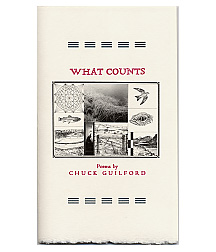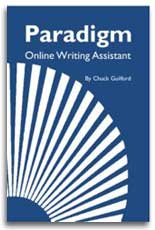Periodic and Cumulative Structure
Which sentence has the base clause at the beginning?
Notice how the following sentences differ:
If you're the kind of person who likes to cry at the movies, you'll love Casablanca.
You'll love Casablanca if you're the kind of person who likes to cry at movies.
Which sentence has the base clause at the end? That sentence is periodic. Which sentence has the base clause at the beginning? That sentence is cumulative.
When speaking of periodic structure, we'll call the elements leading up to the base clause leaders. When speaking of cumulative structure, we'll call the elements following the base clause trailers.
Periodic structure:
If you're the kind of person who likes to cry at the movies, (leader)
you'll love Casablanca. (base clause)
Cumulative structure:
You'll love Casablanca (base clause)
if you're the kind of person who likes to cry at movies. (trailer)
Some sentences, like the following, use both leaders and trailers and therefore are not purely periodic or cumulative, but rather a combination:
After three triple cheeseburgers, two orders of fries, and two steins of beer, I rose slowly, holding onto the edge of the table while I contemplated the chaos in my belly.
Can you find the base clause in that sentence? The leader? The trailer? Try switching the parts around, putting the trailer first and the leader last. What do you think of the results?
Periodic Structure
Beginning with a leader, besides adding variety to your sentence patterns, can help keep your reader's attention level high. So accustomed are we to reading sentences built on the S VC pattern that we start, almost immediately, to look for a base clause. Of course we aren't aware that we're looking for this, but until we find it, our attention level is especially high.
As a matter of fact, this unconscious need to locate the base clause is why you often need to set off introductory elements with a comma, to signal that the leader is done and the base clause about to begin. Notice the difference:
After he had eaten my brother got sick.
After he had eaten, my brother got sick.
My brother got sick after he had eaten.
"After" signals that we're in a dependent clause. We know, therefore, that "he" can't be the subject of the base clause, so we continue scanning for a subject. "Brother" seems a likely candidate, but wait, isn't it the complement of "had eaten"? Is this a story about cannibalism? Then we see the verb "got sick" and realize that "brother" has to be the subject. At last we can process the information.
True, the first sentence keeps our attention level high clear through to the end, but it causes unnecessary confusion along the way. The second sentence indicates with a comma that the leader is complete. The third sentence is clear and correct, but lacks the energy of the second. Now look at the following two sentences:
Between the time I graduated from high school and the time I was discharged from the Navy, I never thought about my future.
I never thought about my future between the time I graduated from high school and the time I was discharged from the Navy.
The first sentence uses the leader to establish a time interval and arouse curiosity about what happened during that time. Then the base clause fills the gap. The second sentence, however, fills the gap before it's created, and the information about the timeframe is like an afterthought. Instead of building toward a strong ending, the sentence fades into insignificance.
Activity
3.14 Combine each of the following sentence groups into a single sentence containing at least one leader before the base clause. Don't forget to set off the leader with a comma.
a. The preacher paused in his sermon. My father woke up.
b. Annie was about to enter the strange room. She pushed the door back hard. She wanted to make sure no one was hiding behind it.
c. The old man went from one island to another. He wandered over storm-troubled seas. He was searching for home.
d. Renee said goodbye to her mother. She picked up her purse. She boarded the bus.
e. The car coughed and sputtered fitfully. It did this for a few moments. It shook hard one last time. It died with a hideous gasp.
Cumulative Structure
Its a process of gradual clarification and refinement.
The main function of cumulative structure is to clarify or qualify an idea stated in a preceding base clause. Phrases and clauses at the beginning of the sentence may clarify also, but with an important difference. When we read periodic modifiers, we don't yet know what they'll modify.
For that reason, and also because too long a delay of the main clause can be frustrating, leaders are generally not good places to stack up phrases and clauses intended to offer supplementary comment on the main idea. Such dependent structures are usually stronger after the base clause, as trailers. Compare the following sentences:
Clemente cared deeply about his people, not feeling that he owed them anything out of guilt but serving them instead with a heartfelt sense of oneness, an awareness that their destinies were inseparable.
Not feeling that he owed them anything out of guilt but serving them instead from a heartfelt sense of oneness, an awareness that their destinies were inseparable, Clemente cared deeply about his people.
Here the writer wants to explain Roberto Clemente's commitment to his people. Putting that general idea in the base clause and getting it up front makes sense. Then the two trailers clarify the reasons for Clemente's caring, so that by the end of the sentence we have a more precise understanding of the central idea. It's a process of gradual clarification and refinement. The second example frustrates because it leaves us disoriented for so long. By the time we find the base clause, we're likely to have dismissed or forgotten the information in the leaders.
The following diagram will help you to see how the structure of the sentence about Roberto Clemente works:
Clemente cared deeply about his people,
feeling not that he owed them anything out of guilt
but
serving them instead from a heartfelt sense of oneness,
an awareness that their destinies were inseparable.
What does the first trailer modify? What does the second one modify? Can you find an example of parallel structure? Now read the following sentence and try to answer some questions about it:
While she wrote Ariel, Plath was not the happiest of people, living in a cramped London apartment, trying hard to play the role of the ideal mother, a part for which she was neither trained nor temperamentally suited, consuming herself in frustrated rage and passion.
What is the base clause? What three structures are parallel? What do they all modify? What does "a part for which she was neither trained nor temperamentally suited" modify? Rewrite the sentence, beginning with "Living in a cramped London apartment. . .." Is the sentence stronger or weaker?
Activity
3.15 Combine each of the following groups of sentences into a single sentence that makes use of cumulative structure. Put the central idea in the base clause and position the base clause at or near the beginning of the sentence. Use parallelism to keep related ideas in similar form.
a. The morning fog was thick. It obscured the sun. It blurred the horizon. It lent nearby objects an aura of mystery. This was especially true of sea shells and driftwood.
b. It was after a bad start. The Yankees got a tongue lashing from their owner. This woke them up. This made them angry. This turned their season around.
c. The restaurant was small. It was really a shack. It was located along Highway 101. This is on the Oregon coast. It is in the town of Yachats. Yachats is a city of fine restaurants. These restaurants serve seafood. The seafood is fresh-caught.
d. The people were angry. They were angry about plans for the new highway. It would run through the middle of their neighborhood. This would force many people to move. It would also split the neighborhood in half. The neighborhood would be split with a barrier. The barrier would be made of concrete. It would be made of steel. It would be made of carbon monoxide.
e. Alicia was delighted with her birthday present. It was a mountain bike. It was extremely lightweight. Yet it was strong. It was a pleasure to look at. It was a joy to ride.



